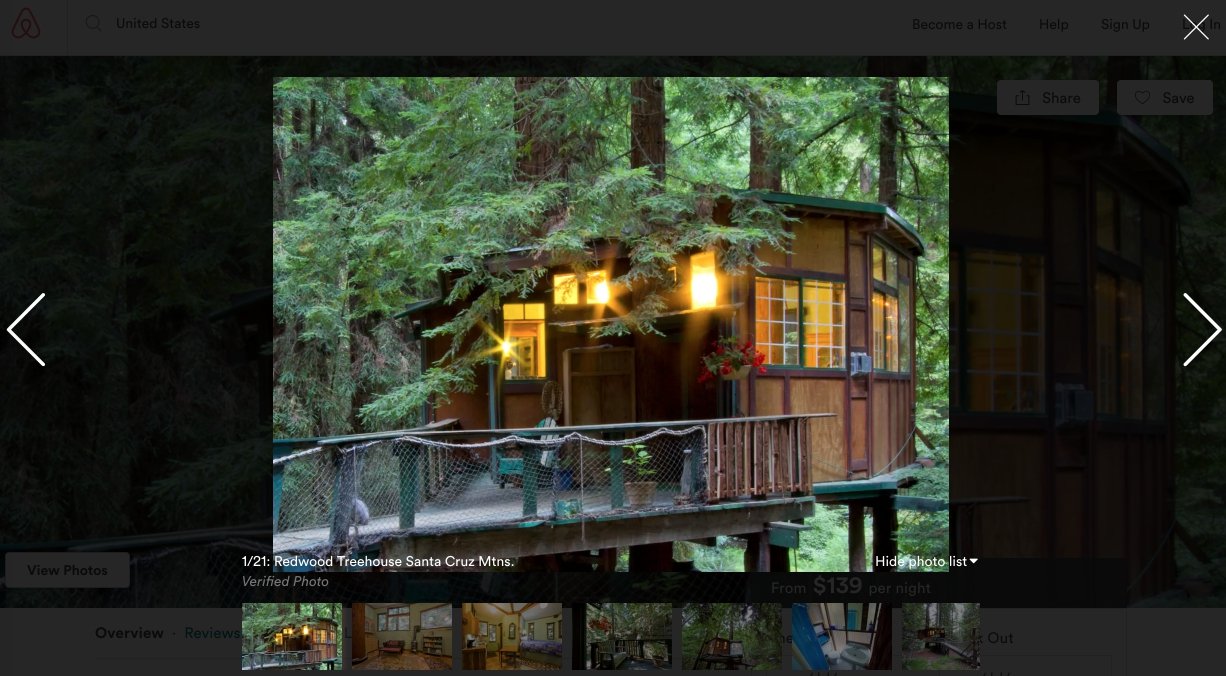Sharing Economy and Collaborative Consumption: Definition, Examples, Market Size and Statistics 2018, Recent Trends

The term Sharing Economy, also known as Collaborative Economy, Collaborative Consumption or Peer-to-Peer Economy, is no longer a novelty or an unknown phenomenon of our modern society. More and more people are swaying away from private ownership towards sharing resources, information, ideas, services, etc. and are getting involved in the Sharing Economy business model.
The reasons behind this huge movement are simple. People prefer sharing over ownership because of:
- Social reasons (meeting new people, sharing experiences);
- Economic reasons (sharing saves money);
- Practical reasons (sharing saves valuable time);
- Sustainable reasons (saving resources and protecting the environment).
What is Collaborative Consumption: Definition
Collaborative consumption or Sharing Economy is the practice of sharing human resources through peer-to-peer services and replacing traditional ownership with sharing, lending and borrowing. This socio-economic model allows businesses to drastically lower the costs of certain services for clients and increase revenues by eliminating expenses such as immovable assets and other investments.
Sharing Economy Examples
In the last few years, the number of people participating in the Sharing Economy through online services has increased rapidly. Services like Airbnb (apartment/house renting), Lyft, Zipcar, Uber (sharing rides and renting cars), TaskRabbit (inviting a handyman to your house) are already taking advantage of this relatively new and rapidly growing market.
More and more new projects are stepping on their heels, like Vinted (sharing and swapping clothing), Spinlister (sharing and renting sport gear), LeftoverSwap (sharing food leftovers) or DogVacay (finding local dog sitters). Experts of McKinsey predict that by the year 2025 half of the world’s economy will be involved in Collaborative Consumption models. Moving to the Sharing Economy is a smart, insightful step into the future of commerce.
Sharing Economy Statistics
According to a report published by the Pew Research Center, 72% of the US population has used some type of shared or on-demand online service. The services they accessed were the following:
- Purchased used or second-hand goods online (50%);
- Used programs offering same-day or expedite delivery (41%);
- Purchased tickets from online reseller (28%);
- Purchased handmade or artisanal products online (22%);
- Contributed to an online fundraising project (22%);
- Used ride-hailing apps (15%);
- Used online home-sharing services (11%);
- Ordered delivery of groceries online from a local store (6%);
- Worked in a shared office space (4%);
- Hired someone online for an errand/task (4%);
- Rented clothing, other products for a short time online (2%).
Exposure to these services, however, varies widely: 20% of adults have used one of these services, while only 7% have used 6 or more. Many people are unfamiliar with the vocabulary of the new digital economy and 73% of adults are not even familiar with the term “Sharing Economy”.
According to a more recent eCommerce insights Survey conducted in August 2018, The amount of US internet users that have used a Sharing Economy service in July 2018 is 29.2% for ages 18-29, 20.7% for ages 30-39, 13% for ages 40-49, 10.1% for ages 50-59 and 6.6% for the age of 60 and over. In total this makes 12.4% of US residents that have used a Sharing Economy service in July 2018.
In the coming years, the Sharing Economy will see innovation and expansion around the core model of services and their further development, like UberEats or Airbnb’s Trips.
Sharing Economy 2018: Market Size & Growth Rate
According to PwC report, the sharing economy is estimated to grow to $335 billion by 2025. PwC says that Britain’s sharing economy market has grown faster than the rest of Europe thanks to the establishment of London as a global FinTech hub. Their recent study for the European Commission highlights that the current £7bn-a-year industry will be worth £140bn-a-year in the UK alone by 2025.
According to a more recent Juniper Research, the Sharing Economy is expected to double its current market value by 2021, reaching over $40 billion. In the US alone, the industry currently serves over 44 million residents and is expected to rise to around 90 million people by 2021. The biggest players on the market are still Airbnb, Uber and Lyft. The research showed that Uber and Lyft are doing better than expected, currently having around 30% returns per journey, while Airbnb’s uptake has grown from 2 million at the end of 2015, to 3 million in 2017. However, while established brands are leading the pack, research found that there is increased pressure from new-born companies as more flexible start-ups and listing websites are beginning to gain traction and grow in market share. For instance, car companies are now taking advantage of the new Sharing Economy model and actively investing in their own car-sharing services. General Motors launched Maven in 2016. Daimler and BMW recently agreed to merge their car-sharing services, Car2go and ReachNow, to increase market share in the US. Audi are piloting Audi on Demand in San Francisco. The Cadillac brand launched their subscription service, Book By Cadillac in 2017.
China has witnessed explosive growth in its sharing economy market value in recent years, with market trade volume topping 3.45 trillion yuan ($501 billion) in 2016, which is up around 103% from 2015. The industry has expanded by 47% in 2017 and is expected to grow by an average annual rate of 30% in 2018 and the coming 5 years.
Advantages of Sharing Economy
Here are the perks of Collaborative Consumption:
- Cheaper goods and services;
- Extra income for providers;
- New and better opportunities for acquiring services (better conditions);
- Building strong communities and trust.

Types of Sharing Economy Solutions
Most collaborative economy services fall into these categories:
- Peer-to-Peer Lending
Borrowing money without having to turn to a bank. These include services like LendingClub, SoFi and Prosper. - Crowdfunding
Connecting people who need money for a certain cause (entrepreneurs, artists and others) with potential founders. This category includes Kickstarter and Indiegogo. - Crowdsourcing
Engaging a group of people to work together toward achieving a common goal. The most successful here is Waze, which allows people to report traffic jams and give directions for the most optimal routes. Among other examples are Zooniverse, MyMachine and Arcbazar. - Renting
Apartment/house renting and couchsurfing. Platforms such as Airbnb, VRBO, Couchsurfing connect homeowners with people who need a place to stay during traveling. - Ridesharing and Carsharing
These services offer advantages over traditional car ownership, such as not having to pay for gas, car insurance and maintenance. Ridesharing services include the likes of Uber and Lyft, carsharing services like Car2Go and ZipCar allow you to temporarily use a vehicle owned by a for-profit or nonprofit organization and pay only for the driving time. - Coworking
Lets you share the costs of office rent, utilities, storage, mail and office supplies with coworkers and other professionals. - Reselling and Trading
Buying, selling and trading used goods without face-to-face interaction. These include eBay, Craigslist and Kidizen. - Knowledge and talent sharing
Allows to offer additional skills and knowledge that you don’t use in everyday work to people in need of a service, or find a handyman for yourself. You can choose from such services as TaskRabbit, Zaarly, LivePerson, Simplist, Mechanical Turk and others. - Medical services
Sharing Economy services in healthcare connect potential patients with physicians and allow them to make appointments online. These include the likes of ZocDoc, BR Online Appointment, AI Med, and Health Tec Trilogy. - Other niche services
Services like food and beverages sharing, leisure and entertainment, ecological solutions, health and fitness solutions and other services.
What Do All These Services Have In Common?
- Fully automated: all processes are fully automated and require little or no maintenance.
- Crowdfunding rating system: user ratings and feedback are being gathered and processed.
- You pay for the result: no more paying just for the process, only when you acquire the result.
- User-generated content: users provide content through feedback and sharing.
- User moderation: user ratings influence service providers so that they move up and down the ranks.
- Market-driven prices: extremely low expenses level leads to lower costs.
Reasons Behind Such a Rapid Expansion of Sharing Economy
Many services in the Sharing Economy have outdone their traditional counterparts in a fairly short amount of time without having to spend huge resources to make their business take off. This is because they choose a whole different business model.
Here’s Airbnb’s (one of the leaders of the Sharing Economy) achievements, compared to traditional giants in the accommodation industry. Notice how they didn’t have to spend a dime on immovable property in comparison to their competitors. This is the brilliance of the Sharing Economy business model:
| Number of rooms | Year founded | Market capitalization (USD) | Immovable assets (USD) | |
|---|---|---|---|---|
| Marriott | 1,1 million | 1957 | 16 billion | 985 million |
| Hilton | 745 000 | 1919 | 19 billion | 9,1 billion |
| Airbnb | 2 million+ | 2008 | 30 billion | 0 |
| Intercontinental Hotel Group | 727 000 | 1988 | 9 billion | 741 million |
Completely New and Unique Business Model
The Sharing Economy completely overthrows traditional business models defined by Michael Porter. Mr. Porter describes three entities that exist in the business environment: brand, product and business model.
The business model in part contains competitive strategies that allow companies to survive in a crowded marketplace. These strategies are:
- Cost leadership strategy (gaining an advantage by reducing expenses, costs and prices);
- Differentiation strategy (delivering innovative and high-quality products);
- Focus strategy (focusing on niche markets and unique needs of customers).
According to Porter, it is vital to choose one specific strategy. Most traditional businesses follow this rule. What makes the Sharing Economy business model unique is that its services incorporate all three of the above competitive strategies. This gives them a huge advantage over competitors.
Trust and Transparency
Two main principles of collaborative consumption are trust and transparency. In a recent TED talk on how reputation is the new capital, author of the book “What’s Mine is Yours”, Rachel Botsman, said: “The real magic and the secret source behind collaborative consumption markets like Airbnb isn’t the inventory or the money, it’s using the power of technology to build trust among strangers.”
Sharing Experience
In an article on Today.com, the CEO of Airbnb, Brian Chesky, stated that people are no longer looking just for high-quality products, it’s the social experience they are after. “The stuff that matters in life is no longer stuff,” he said. “It’s other people. It’s relationships. It’s experience.”
From Single Portals to Ecosystems
The concept of single portals and platforms has become outdated and is now being replaced by large ecosystems. The main idea behind ecosystems is that their elements are interconnected. This interconnectivity allows the elements to grow much faster. Connection to the system ensures the survival of each element. In return, each element multiplies the system’s chances of survival. It’s like a symbiosis. Systems contain a network of miniature systems and they all feed off each other to reach their goals.
The Sharing Economy services are based on this model. The Sharing Economy is a socio-economic system built on the principles of sharing human physical and intellectual resources such as accommodations, sharing homemade food and beverages, ride-sharing and car-sharing, knowledge and talent sharing and much more.
Interesting Facts
- Airbnb, Uber, and Lyft are collectively worth $106 billion, which is twice the size of the entire country of Panama.
- In its first four years, Airbnb built an inventory of 600,000 rooms; Hilton took about 23 times longer - whopping 93 years!
- Renting castles and treehouses: Airbnb has listings for over 300 castles. However, if your childhood dream was to live in a treehouse instead, the home-sharing service can make your dream come true with its 280 treehouse listings in the US alone.

Recent Trends
Sharing Economy & Fashion
Recently emerging sharing economy services like Rent the Runway, Le Tote and Girl Meet Dress allow people to rent a number of garments for a month and then trade them for a new selection the next month. These websites are beginning to gain popularity as clients get the opportunity to try out brands that they could not afford to own before, staying on the pulse with today’s ever-changing fashion trends.
Sharing Economy in Asia
Molisan, a new shared economy trending service in China, allows customers to rent umbrellas by paying a refundable deposit and use them over a 15-day time period. China provides many other Sharing Economy services such as renting bicycles, portable battery packs for smartphones and even basketballs. “After all these years, China is finally embracing its communist roots,” said Andy Tian, an entrepreneur and co-founder of Asia Innovations Group in Beijing.
Blockchain Technology
Sharing Economy services can now benefit from new emerging technology such as Blockchain. It is a revolutionary technology which allows to run software in a secure and decentralized manner. This way websites and applications don’t need to be deployed on a dedicated server. Instead, they use peer-to-peer network that’s not controlled by any single party. This is the key to providing a shared economy environment where every contributor gets a share of the overall profits.
Virtual and Augmented Reality
Several Sharing Economy platforms are also taking advantage of the trending AR and VR technology. This tech is an ideal platform for sharing experiences. Recent advancements in rendering 3D content have made this technology very popular as it allows to immerse users into a simulated world that is very close to reality or, instead, as far away from the real thing as possible. Users can create their own virtual realities and share them with other people. Examples of these services include the Sansar Social VR platform, VR-bnb for renting augmented reality and virtual reality equipment, and AltspaceVR, which allows to host and attend live events in virtual reality.
Conclusion
Sharing Economy is the next evolutionary step in modern commerce. It’s the biggest innovation since the introduction of eCommerce years ago and is beginning to take over the international economy. Markets all over the world are in some way showing signs of participation in this new business model, and it’s no surprise as Sharing Economy’s advantages are right there on the surface.
Collaborative consumption business model allows to cut expenses and eliminate other unnecessary investments, therefore increasing company’s revenues. This business model also multiplies your customer’s loyalty by building strong relationships based on trust and transparency. While sharing, people gain access to a broad variety of new services and experiences. They share them with their friends and family, as well as with complete strangers, building new acquaintances and relationships.
It is only the start of the Sharing Economy age now. We will see more and more advancements in the coming years as specialists predict a great amount of growth in this industry.
LOVATA has its own approach and experience in developing and designing complex sharing economy software projects.
